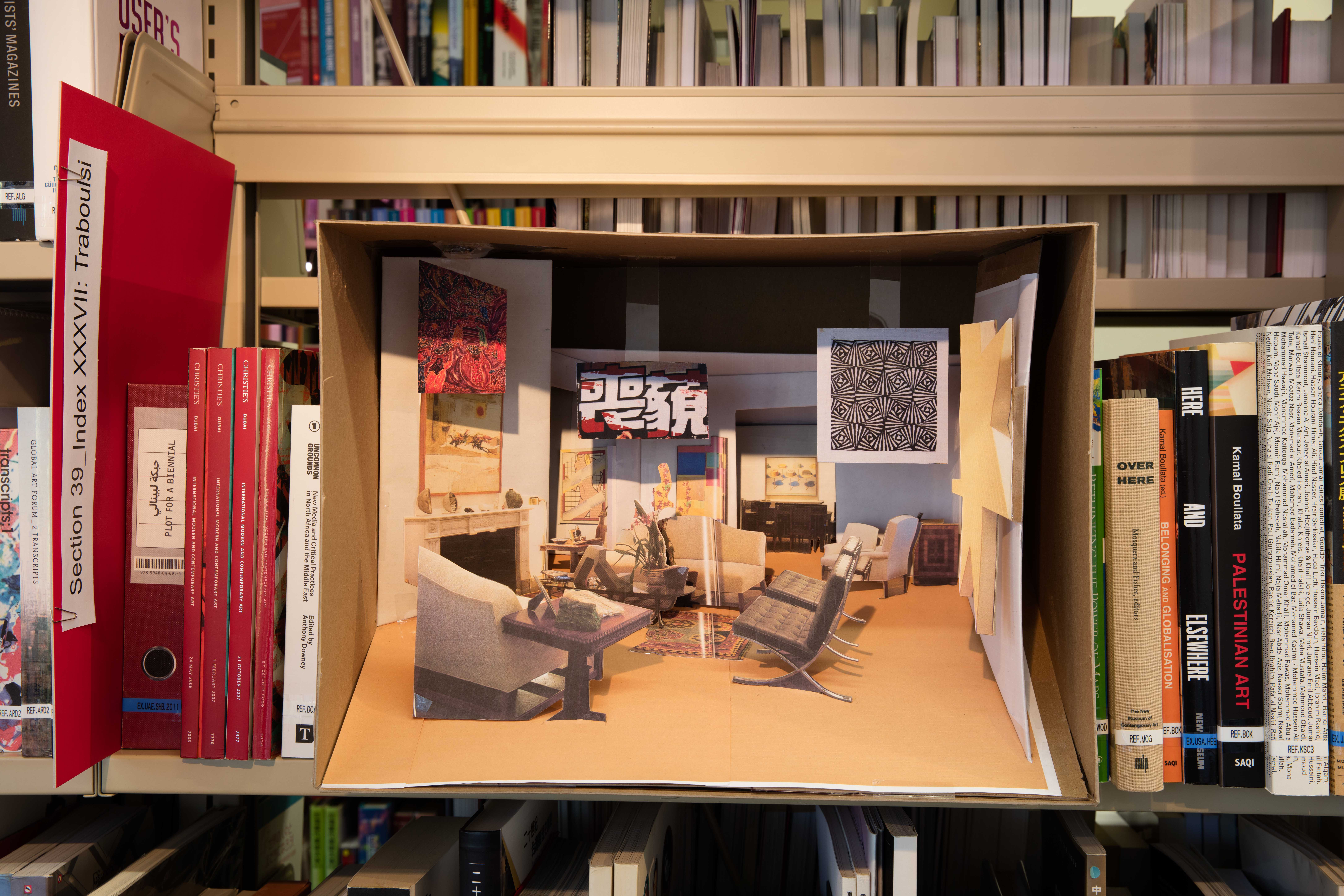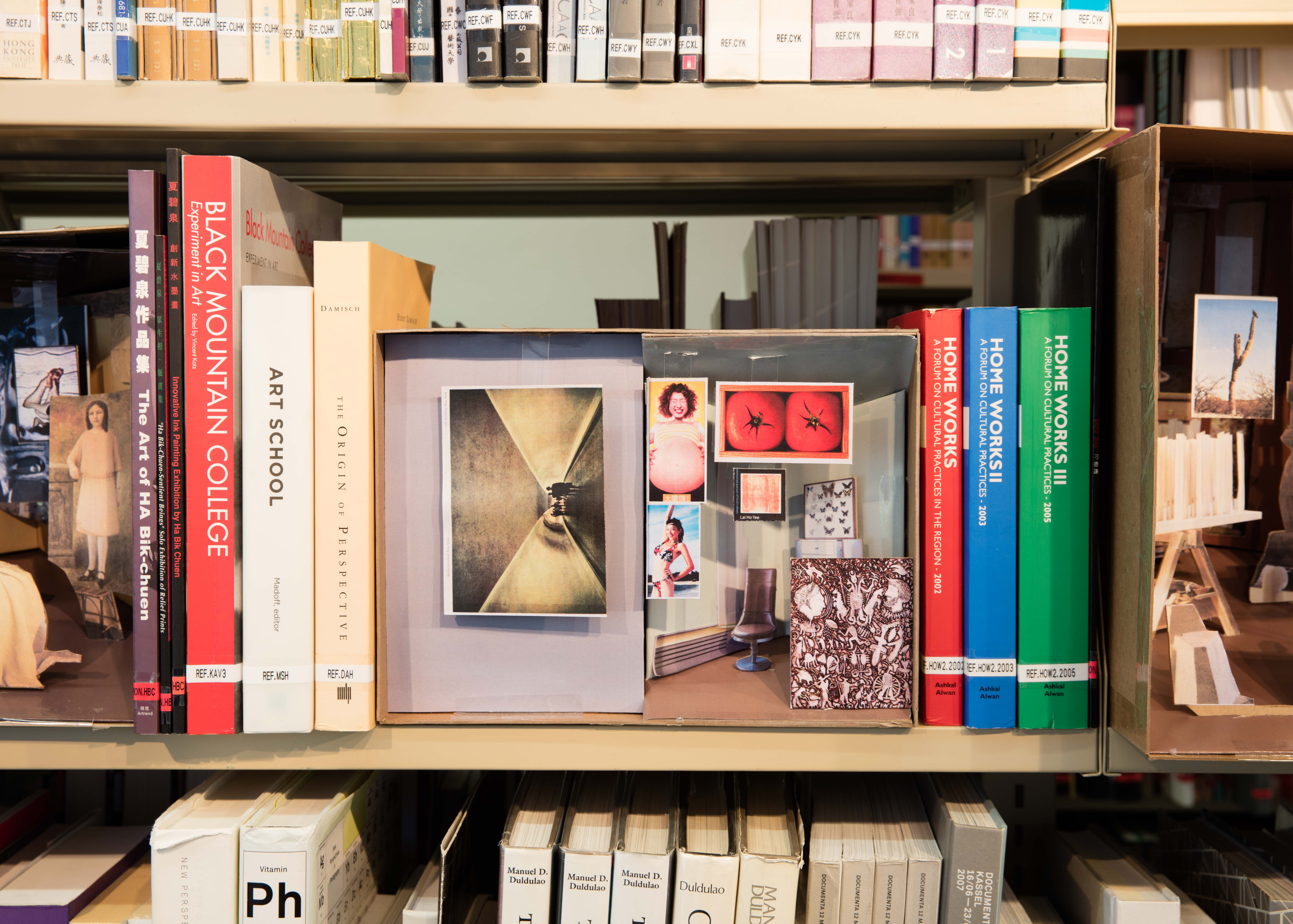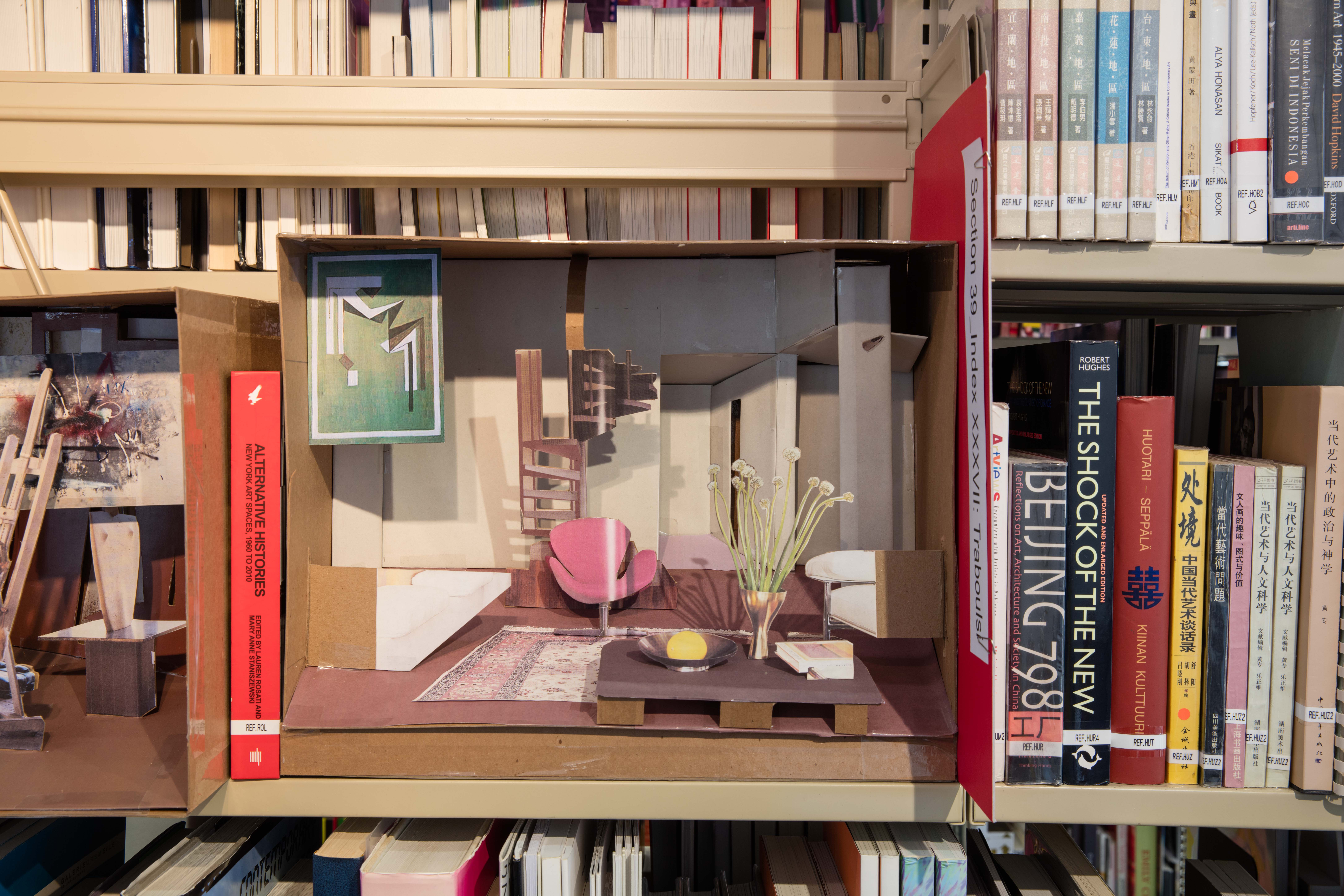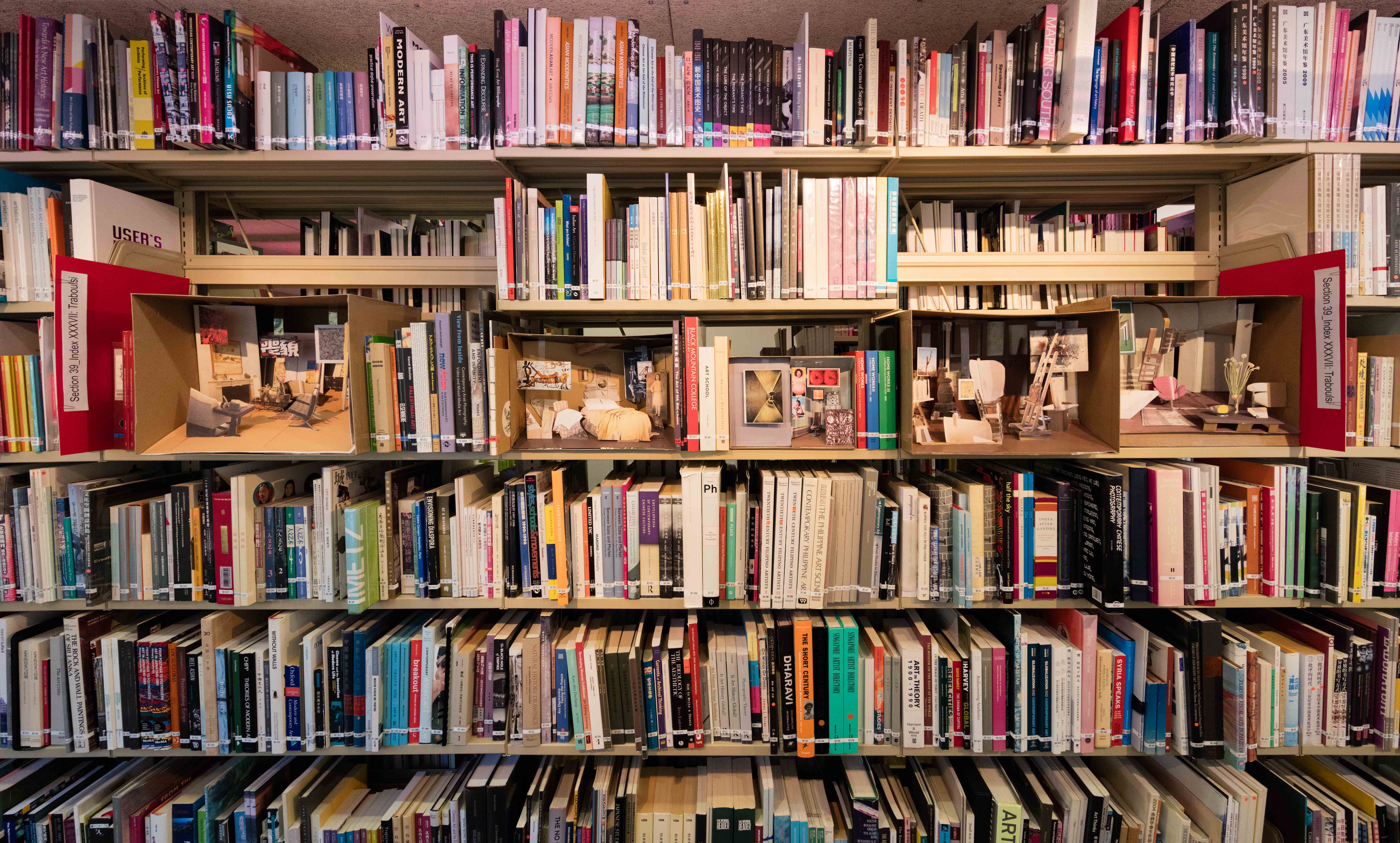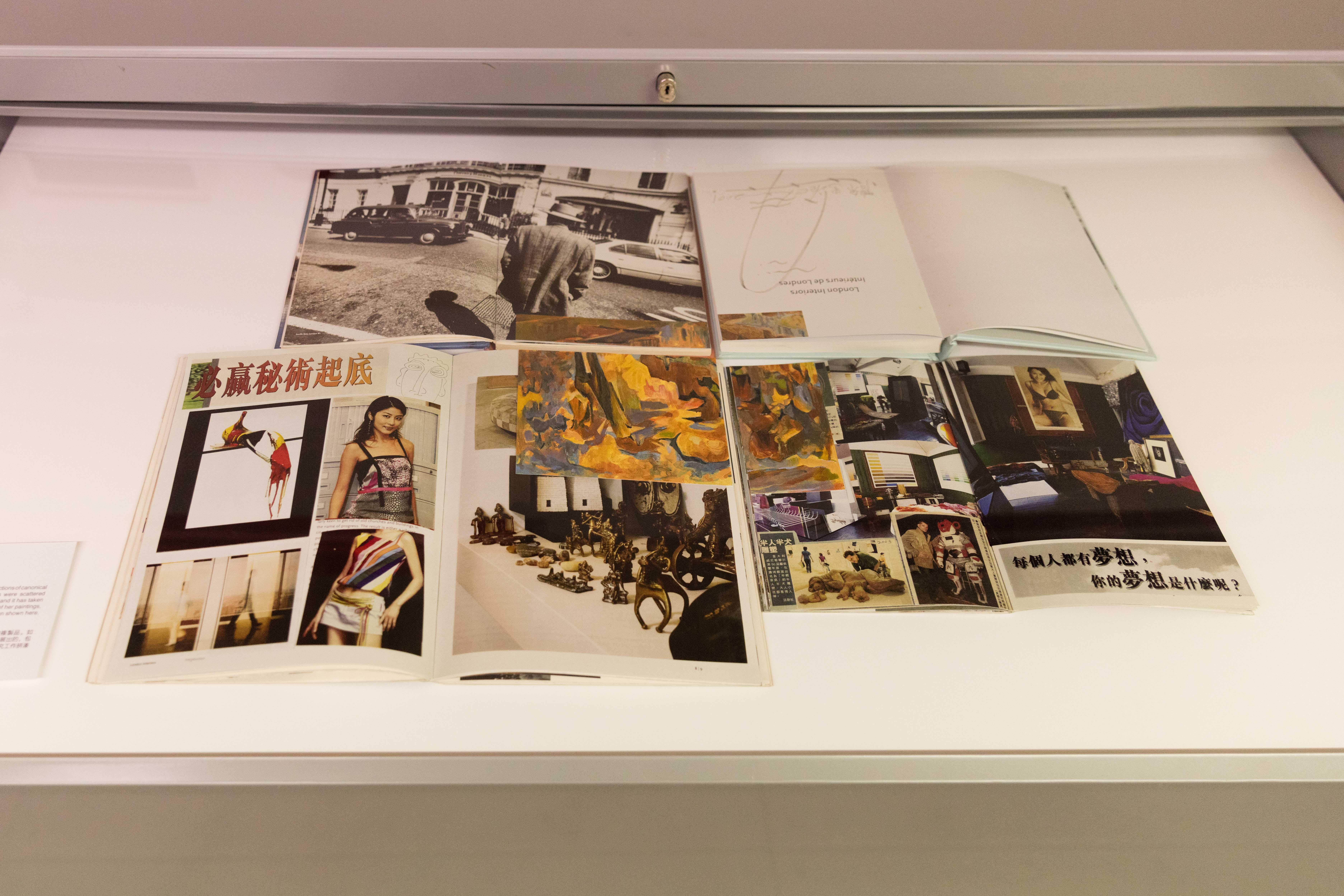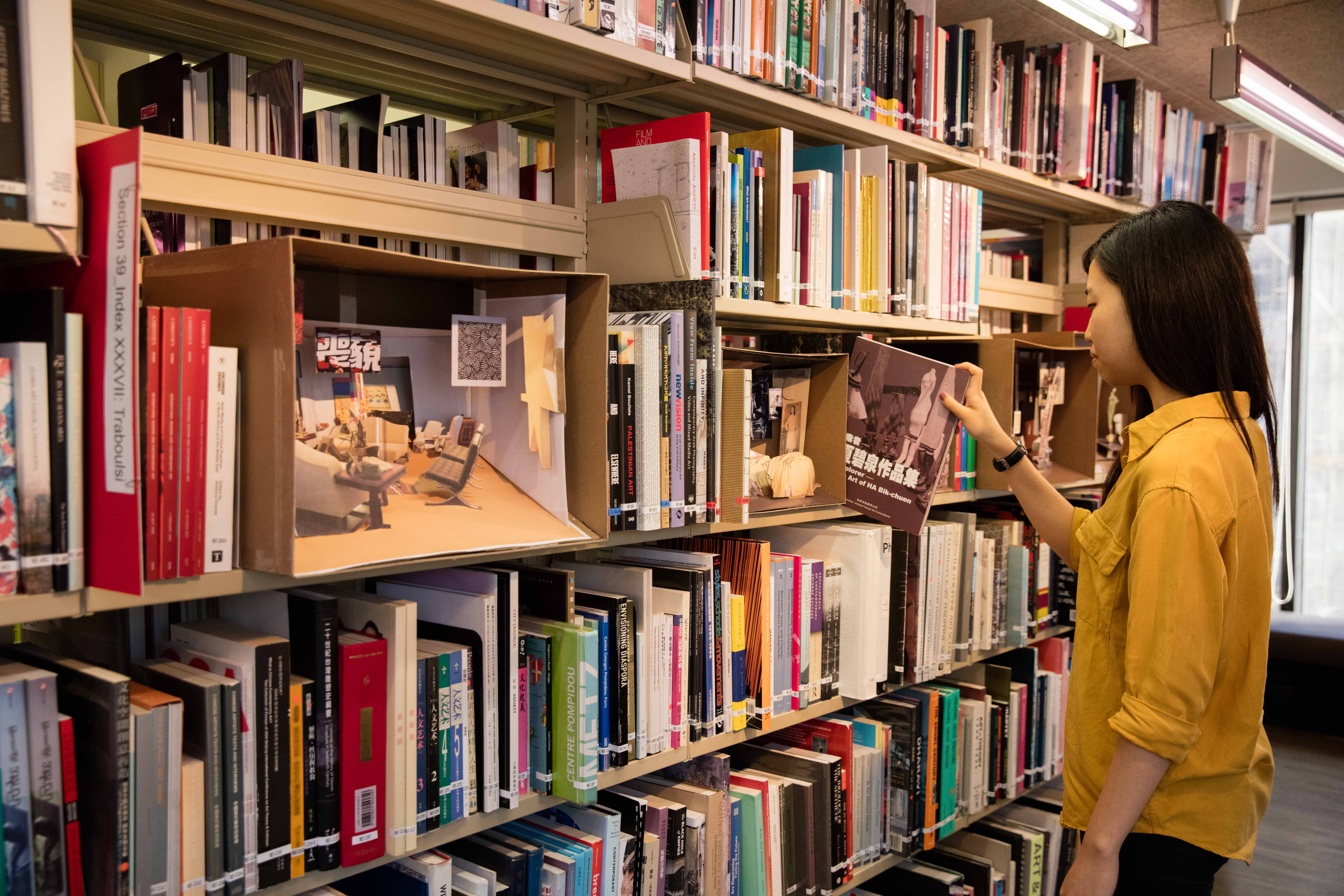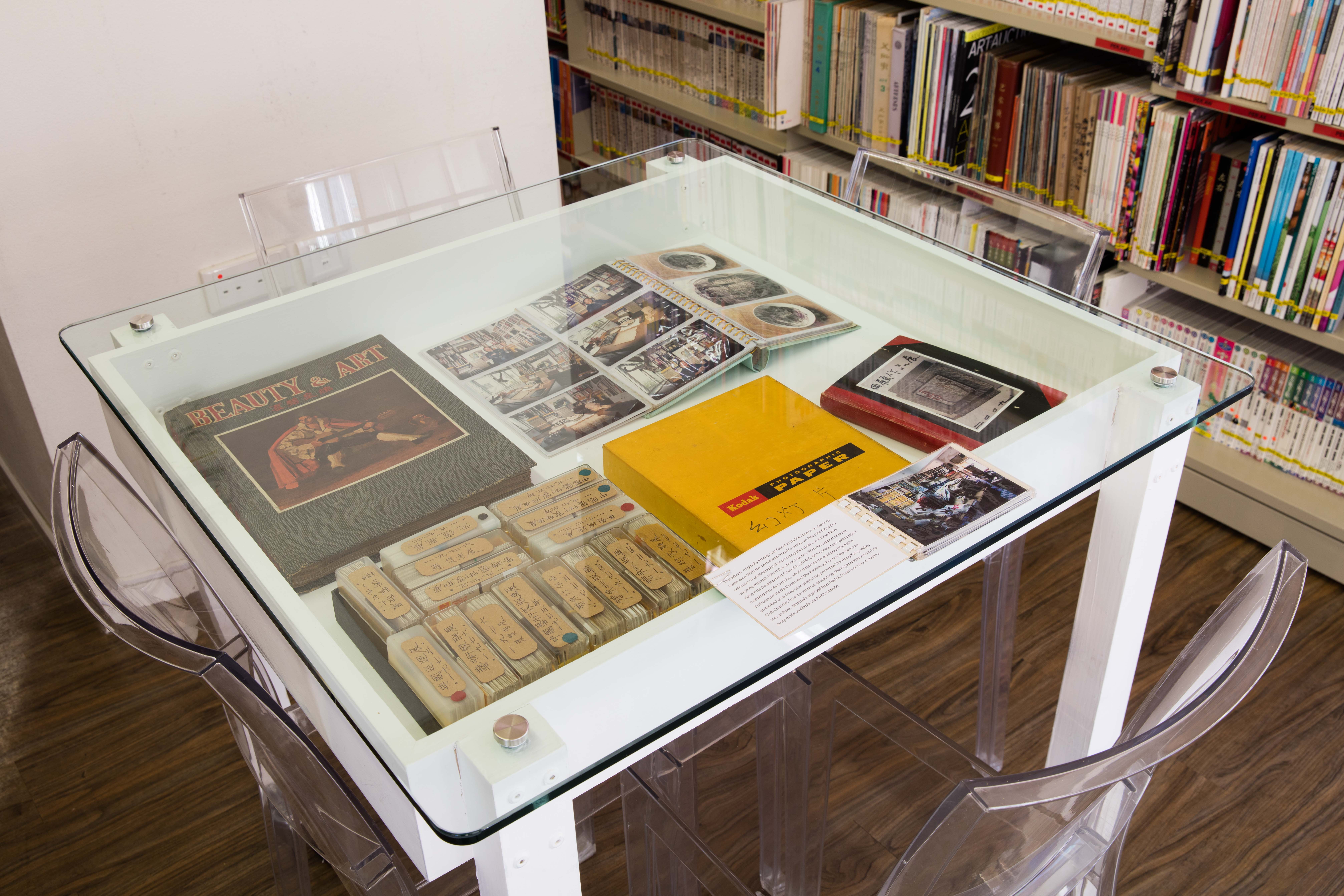Interviews
History in Play
Hammad Nasar in conversation with Reema Salha Fadda
Walid Raad's artistic intervention, titled Section 39_Index XXXVII: Traboulsi, as part of Asia Art Archive's (AAA) 15 Invitations project opened up an opportunity for a new, and previously unimagined, collaboration to take place. Using the archives of Hong Kong based artist Ha Bik Chuen, recently digitized by AAA, Raad imagines a fictive artistic collaboration between Ha and Suha Traboulsi (a fictional Lebanese art historical figure) to create new collage pieces that capture the spirit of Ha's works. The background story informing Raad's project goes as such:
Between 1967 and 2009, Hong Kong-based artist Ha Bik Chuen collaborated with the Beirut-based artist Suha Traboulsi on a number of projects. Most of these remained out of view until 2010, after Ha's death, when his archives were unpacked and studied. The two met in 1962 when Traboulsi travelled to Hong Kong to research Chinese calligraphic practices. They struck an immediate friendship that soon turned into an artistic collaboration from afar: Ha in Hong Kong and Traboulsi in Beirut.[1]
On display in the public library of AAA, a series of 3D cardboard-box models and collage books produced by Raad, which draw directly on the visual ephemera collected by Ha. These include: the exhibition catalogues he collected; his re-appropriated interior design books which he turned into collage display pieces by inserting cut-out images of his paintings (as though Ha was creating a setting for an imagined art exhibition); and his own works. Tucked between the display cases and books shelves of AAA's library, Raad's intervention is as much about using the archive as a site from which to imagine a past collaboration between Ha and Traboulsi – one that took part in a different era, across different locations (previously unimagined, or absent from art history) in order to construct a plausible art historical narrative.
By bringing a fictional Lebanese artist into contact with a Hong Kong-based artist, it creates an opportunity to use the art world and the archive as a site to re-think the connection between different geographical locations. In this sense, by 'putting history into play', the intervention challenges the distinction between fact and fiction. Moreover, it opens up an opportunity to imagine a transnational artistic collaboration between two different locales, Hong Kong and Beirut. What binds these two artists and their collaboration is the emphasis on friendship, in which personal narratives and artistic subjectivity, rather than institutional networks or historical dictates and periodization, necessitate how we imagine this art historical moment. As such, the intervention provokes a new way of thinking about how art historical knowledge is produced.
In a conversation between Hammad Nasar, former Head of Research & Programmes at Asia Art Archive, and Reema Salha Fadda, Commissioning Editor at Ibraaz, the two discuss Raad's intervention as a starting point to think about questions of art historiography, the role of art-making in the present, and how to account for diverse cultural affinities beyond expectant frameworks based on regional, national or geographic locations that can account for multiple temporal and spatial layering.
Reema Salha Fadda: How did 15 Invitations develop as a project?
Hammad Nasar: As the name suggests, it's to mark Asia Art Archive's (AAA) 15-year anniversary. We didn't just want to do something celebratory but wanted to use it as an opportunity to engage and reflect on the last 15 years, and think about what the next 15 years would be. Of course the best way to do something like this is to invite others in, so what we then decided pretty quickly was to work with artists and those who don't necessarily think of themselves as artists – writers, thinkers, geographers, designers – and invite them to engage with our collections, with the archive, the team, with Hong Kong and with ideas that animate us.
The interventions took place in phases over two years. Most of the participants have worked with us before, or are aware of the work we do, so that there is an awareness and dialogue that can be enriched by their intervention. The interventions have normally had a couple of phases, where the participants have had visitations, opportunities to research and engage, and then develop a project proposal.
RSF: Did you have a geographical base in mind when inviting artists?
HN: Although we didn't want to go for UN-style coverage, we did want to be sensitive to the fact we have Asia in our name, so we had to consider how our invitation will not simply represent, but question and reflect on the region.
RSF: Can you explain how the collaboration between Walid Raad and Asia Art Archive came about?
HN: Walid Raad is the first name that comes to mind when you think of contemporary artists who have most intelligently explored the archive. Raad visited AAA on a personal journey seven or so years ago, and had been aware of AAA. Ever since that time, we have been trying to find the right opportunity to get him back to Hong Kong. Then in 2013, after I'd moved to AAA in 2012, we met up in New York over coffee and spoke about the idea of working together.
Since moving to Hong Kong, I was struck by the similarities and parallels to the Gulf: there are reflections of Dubai in Hong Kong's harbour; I go to Singapore and I can see myself in Abu Dhabi. And his approach to his ongoing project Scratching on things I could Disavow – specifically the way he is looking at collections methodologically and structurally – led me to think this would be of interest to him. So I suggested 'don't look at calligraphy, come look at ink', in other words look at his project through its reflection in the South China Sea. It took about another year to convert the idea to a physical time and place, and we invited him as a resident and he spent a week with us. One of the things he intervened in in a significant way was the archive of Ha Bik Cheun. We must give him credit for picking up a book in Ha's library and discovering Ha's collage books.
One of the questions we ask at AAA is how do we work with artists in an organic way and over a long duration? We are interested in avoiding what I call 'resident art' which tends to take a formulaic approach. So it was about being part and parcel of what we are doing, be it a programme on performance, journals or whatever they choose to do within the short period they are here. It is about the artist bringing their eye, their curiosity and way of looking to our archive. Out of that residency, something stuck, and when 15 Invitations was being developed we thought immediately of Raad. He and I then started a conversation in spurts that lasted a good six months or so – to discuss what form this could take and how it would work. Of course our budget is tiny, so it's wonderful that money was never an issue, and Raad was very generous in thinking through what could be done within that.
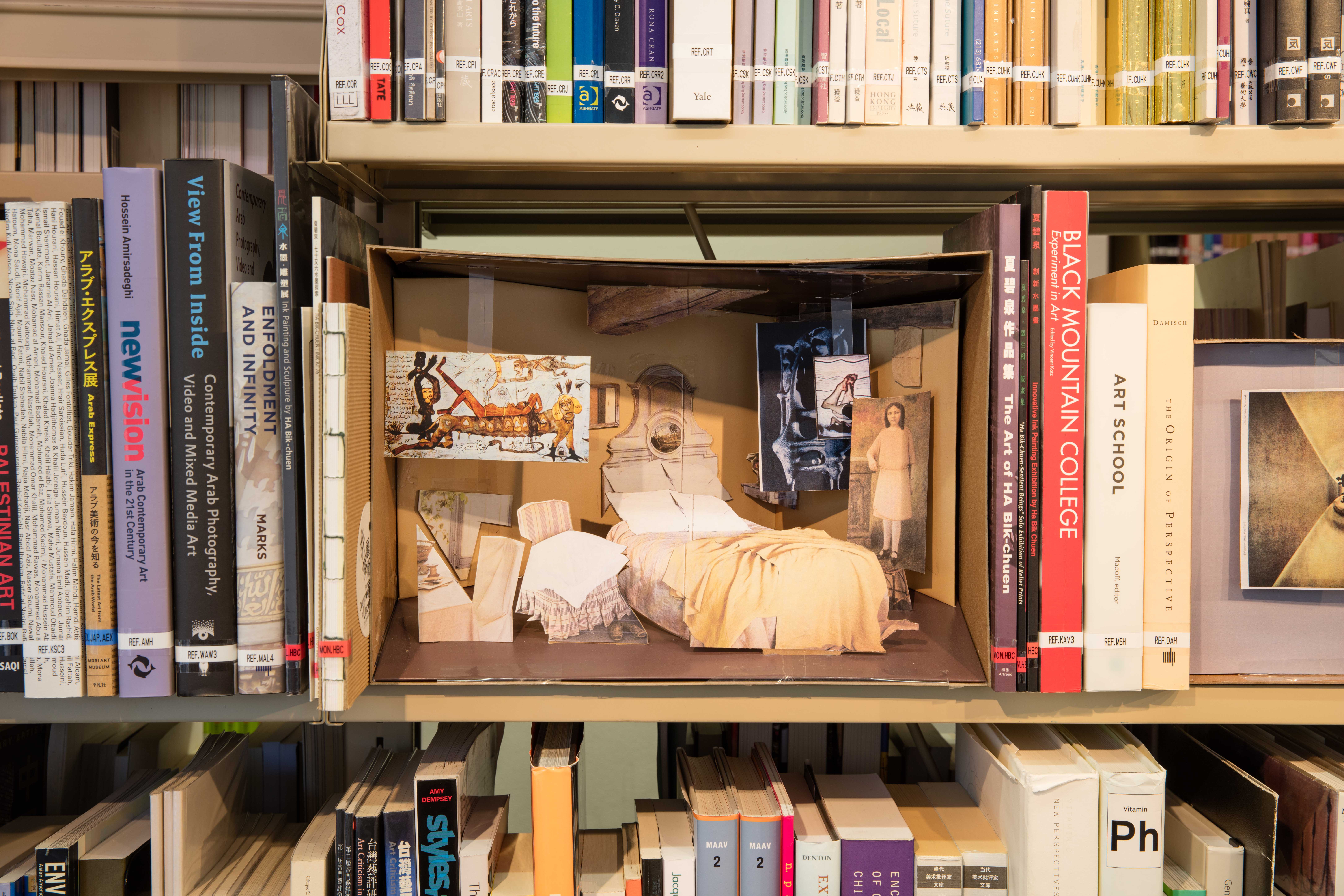
RSF: I am interested in discussing how this project, in your words, puts history into play, in turn raising new questions around the framing of art histories. Can you speak about how this intervention offers a different approach to knowledge production? The focus on friendship is central to this project – albeit a fictional friendship – which art historical narratives often gloss over, often preferring periodization over narrative details. Here, I am reminded by art historian Wendy Shaw, who argues, 'The problem may be that writing history itself as a practice and as a method may foreclose a means of knowing about the past that lies outside of the frameworks established through a documentary claim to truth'[2]. Can you expand on this?
HN: That's a terrific path from which to enter this project, and it's not the most obvious one. It also reflects one of our key – what we call content priorities – this idea of enmeshed histories. To summarize – what we're interested in is what we call art histories of excess; that is, art histories that exceed the lives of the artists, or close studies of the singular object; which exceed ideas of nation. I often use an analogy: if you're using the two ends of one ball of wool to knit two different sweaters, how do you say which one the wool belongs to. In terms of Walid Raad, how do we extract the Beirut-based artist from the New York based artist? How do we think about that in a way that is not about exchange – nor about influence, but about an entanglement.
Another element is how does one write art histories that exceed the discipline of art history, because they absolutely need to – I think that's one of the biggest struggles of the discipline itself. For instance, how does one look at exhibitions? And if they are – as we argue they are – one of the richest sites of art historical construction, for Asia (however you wish to define it), then by definition they are about place; space; politics: what can be shown, what can be funded and by whom? And then, they're about art objects and the discourse they are framed within. So how do we look at exhibitions in a way that illuminate all of these things – that go beyond the traditional boundaries of art history. I think that's really interesting.
This notion of friendships is integral to the work we're doing, in terms of when we're looking at personal archives – because that's what they are – we are zooming in on folks who can open up vistas onto fields, onto scenes. And of course these are people either as teachers or as writers or curators, or collectors even, who have this rich entanglement of friendships. So just through one personal archive, you see a scene. Quite often we get people in who say "oh so and so artist, or my uncle, my aunt, my grandmother, this particular archive – would you be interested?" and actually we are not particularly interested in monographic archives of artists because I think that will be well covered by whichever national museum project or gallery project or the art fair that wants to do modern masters – that stuff will happen. But what will not happen, or what is more at risk, are these networks that come out.
I don't want to digress to much, but we've been doing various projects in Hong Kong where we are trying to develop methodologies and tools and experiments as to how we can bring these kind of networks and friendships to light to ask how did artists live and exist?[3] How did artists make a living? Who wrote about them? Who gave them shows? What did art history look like naked? Those kind of things is what we're looking at. And in a way Raad's project plays right into this. As part of the display we've done a little photo-album of Ha's works, and one of the photos in there is this sort of tablet with a Quranic inscription in Arabic. Now that was hanging in Ha's studio; so that is not fiction, it is not Raad inserting anything, but the fact that we have now put this image of a curious object (in a HK context) in there, in the context of Raad's work, suddenly everything is in play.
RF: That's interesting because art history does tend to streamline these "fateful" happenings. In an era of hyper materiality, when large-scale museums and institution building – spaces that need to be filled with material objects – are dominating the cultural landscape, this intervention points to a different gesture. Raad plays with the idea of mimicking the graft of the archive, even putting a line in the project's introduction about the arduous task of piecing together the artists archive. He focuses on details that may normally be relegated to the periphery of art history – the literature references, the books, the indexes – rather than solely focusing on the central material object that was produced. This seem to invite a reflection on immateriality.
HN: Yes, as you were saying this, I was also thinking of an earlier project – also part of 15 Invitations –- where we invited the Indian artist Shilpa Gupta, to look at a set of personal archives, with a particular focus on friendship[4]. For instance, one of the vignettes in the project covers a trip that three artists took together, that was documented through photographs: one taken by Nasreen Mohamedi, which has been shown as part of Documenta, and at the Metropolitan Museum of Art in New York, so it's known around the world; and another, perhaps not quite of the same composition but of a similar hue, taken by the artist Gulammohammed Sheikh, and that was an image that just exists in a personal album. And the trajectories of those two photographs that were taken at the same time are really interesting, and force us to look anew at what were the stories around them. Gupta's intervention was therefore almost an excavation of what is not in the archive through notes and stories based on interviews, and in a way that is what brings all of these possibilities – and there are infinite possibilities – to life.
I think Raad, in this project, does that also, in a very specific way. Even the aesthetics suggest this; so if you look at the cardboard boxes, they look unlike any of Raad's work. He joked at the time that this was a reflection of our budget. But very quickly, you realize he is reflecting the aesthetics of Ha's collage books. So there is an integrity into that aesthetic register that he is respecting by presenting a work in that way. And what it also emphasizes then, is its precarity, which I think we need to remind ourselves is also true about history: history should be precarious; it should constantly be challenged, and refined, and revised and questioned.
RF: The project also offers a new way of re-thinking cultural appropriation based on creative and imagined exchange, which flattens hierarchies of cultural capital. And despite Raad, a well known artist, excavating the work of a lesser know artist, the collaboration is very much guided by the spirit of Ha's practice. I am interested in what we can learn from these collaborations – or rather, what can art history learn from this imagined encounter? And how has the influence of looking to invite artists in, influenced you as an organization, specifically in terms of how you archive and how you exhibit?
HN: I would describe our approach to programming as thinking in public. And I think there should be an element of risk to that. When you do something in public its useful to feel a bit unsure of your grounds. I've often said if we were going to do a rebranding I would just insert three question marks at the end of each word in our name. And I think those are question marks that we should never forget: What is Art? What is this Archive about? What is Asia? And I think its important that it is not just us asking these questions; we invite the most interesting minds that are happy to accept our invitation to come and ask these questions of us.
Let me try and address your question through another example. We recently hosted the art historian Amelia Jones, who is known in particular for her work on performance art, as a resident scholar. In addition to doing a public talk while she was here in Hong Kong, we used that as an opportunity to host an internal 'master class' where we presented many of the projects that we are doing within the field of performance art in different parts of Asia; we also invited external people working in the field of performance art. Out of that came a bit of a critique, specifically around why we are privileging the work of the institution and the work of the interviewer? Where is that coming out of? I think that is fantastic for us, as it allowed us to think how we can further refine the approach we are taking. Similarly, with Walid Raad coming in or Shilpa Gupta, or whoever we invite to work with us, they become critical interlocutors for us to also think about what we are doing. In many ways, the core audience for the 15 Invitations programme, becomes us – how do we use each intervention as an occasion to think in public? And we are part of that public, we are not outside of it, nor are we presenting it to be applauded, or whatever, it's very much an active participation.
As for this hierarchy of which you speak, I think it becomes less loaded when we are actually trying to figure things out; it's not about 'Hey, look at us'. A year before the Raad exhibition, we did a small-scale exhibition of Ha Bik Chuen's archive. Our initial interest in Ha's archive was exhibition documentation – because Ha used to photograph exhibitions in Hong Kong and he did this for over four decades, so there are over 100,000 photographs of exhibitions in Hong Kong. So for people who say Hong Kong has no art history, this documentation offers a counter-narrative that we haven't yet figured out how to construct an art history from. We were thinking of how to present this material, and make it work. That took the form of a small exhibition in our library space, and out of that exhibition came many things: more questions; a large-scale project that's now being developed; or Walid then deciding to work with the archive.
RF: It's interesting how you've presented Raad's work, in amongst the indexed bookshelf, with texts housed at AAA that relate to the Arab art histories the intervention points to. By bringing in supplementary material that relates to the project, by placing his works alongside with Middle Eastern art history references (though I know we are cautious to redefine geographical framings), part of the visual coding of the whole project points to the process involved in constructing the archive, or as you mentioned earlier, thinking in public.
HN: The credit for that has to go to Raad. It was very much his decision; he did not want to treat this library as a white cube which is not always the case with artists, and he was very comfortable in this work being presented in a functional way – so the boxes are placed in the shelves of the library, and the top drawer of the archival shelf is used to present his work. There is nothing violent about his intervention. The choice of books arranged alongside the boxes asks similar questions: Raad spent a bit of time looking at what we have – we worked together to create a long list out of which he selected a short list.
AAA and Hong Kong may not be the place where scholars come for primary research on Arab language materials from the Gulf or Beirut – I don't think that's very realistic – but there are interesting inquiries and conversations going on in the Arab world that I think it's important for us to be in dialogue with. Reaching out to Walid Raad was of course part of that, as was our recent collaboration with the Sharjah Art Foundation, where some primary documents from our Chinese collections have been translated, not only into English for the first time, but also into Arabic[5]. The same project also shared the output from our collaboration with the Indonesian Visual Art Archive where we helped translate material from Bahasa Indonesian into English. Such juxtapositions are tiny interventions, pinpricks even; but in their very modesty they allow us to move beyond the high-scale art institutional model.
RF: The intervention invites us to think about the absences within art histories – what is included, what is left out, and what is there to be discovered over time,[6] in this instance, by imagining an artistic collaboration that took place six decades ago as a result of a seemingly chance encounter. Thinking of my own research area of Palestine, and considering the violent cultural appropriations occurring there and elsewhere in the region – either lost by disaster, conflict, violent appropriations, and institutional politics – what role do artists play in re-thinking how we construct art histories? How can we re-think absences? As such, I want to discuss the fictive element to historical writing. What is interesting with this project is that it's not just about remedying the absences of art history or rectifying how we view the past. And how can art history embed those erasures? [7]
HN: We're now trespassing into Jalal Toufic territory. What you're then getting into is this idea of 'resurrection' in Toufic's terminology and thinking about what happens when you're resurrecting one 'surpassing disaster' while you're living through another. So how do these disasters overlap? Of course I don't have the answer, but its something that we need to lock horns with.
One other thing that Raad's project does is put two different geographical lots of 'surpassing disaster' to talk to each other. So the fact that Ha's collage books were never seen publicly and did not circulate is interesting. They are now circulating – and because of Raad's project there are people that are now going to hear about Ha for the first time, and of course that carries a risk that people will think that Ha is a fictive character. But the same is true for Hong Kong people who have never seen Ha's collage books. Once you see these books, what does that do for Hong Kong's art history, and how would Hong Kong's art history have been impacted (even in some minute way) had they seen these books or Ha's extensive archive.
In a way, you've also described our project as an institution. That is why AAA was founded, it was to try and address this very lack. We are trying to develop methodologies and tools that can help construct these missing art histories. The role of artists in re-constructing histories is multi-layered. There is an element of the zeitgeist here. When Walid Raad was here for his residency, we joked that RBAs (Research Based Artists) are the new YBAs. But we're looking at the archive as more than an aesthetic – as actual knowledge infrastructure and sometimes they get conflated. There is an aesthetic of the archive – the snip, the text, the photograph, the poetic line – which is de-rigueur and can sometimes overwhelm the archive as infrastructure. I sometimes think of what we do as plumbing – it doesn't look great, but if you don't have good plumbing you have a miserable domestic life.
I think it is important that in addressing the problems we face, we figure out lateral and transnational modes of working, because the institution-building mode risks reasserting propositions that can be very nationalist, very narrow, and quite frankly as fictive as any construction by Walid Raad.
RF: Absolutely, and the same can be said from the other side, the way in which Raad embeds Arab art history into the Chinese context. For example, Traboulsi uses Ha's approach of producing collages in magazines and text, by inserting fragmented and scattered images of famous painting by Arab artists (Inji Aflatoun; Abdel Hadi Al Gazzar; Hamid Nada and Marwan) thus positioning Arab art histories within a practice foregrounded by a Chinese artist. Similarly, the miniature architectural model of an interior based on Ha's collages, not only gives new life to Ha's work by translating the archive in a different visual code, but also renews Raad's aesthetic practice. You referred to this as Raad capturing the 'spirit' of Ha.
HN: Ha was a self-taught artist, and in one of his interviews, close to the end of his life, he outlines an aspiration: artists should be circles rather than squares, and that they should sit at the top of a hill; in other words, an artist should keep rolling and accumulating experiences. One of the mysteries – and one we will never resolve – is why did no one see Ha's collage books; his dealer never saw them, his family never saw them. One can think of them as personal notebooks, but he was signing them in ways that are similar to signing his prints and other works. A hypothesis I would put forward, is perhaps those collage books were that circle that was rolling down the hill, and in one way Walid Raad has joined the circle at a lower level of that hill and he's still rolling it on. And I think what I really appreciate about Raad's intervention here, is that he's responded not just to the aesthetics of the collage books but he's kept alive the possibility of adding something to the project – they have an openness that he's managed to carry on in this conversation with Ha.
RF: Yes, it very much feels like a conversation. What has the public reaction been to these interventions? Does Raad's position as a well-known artist, who is very much a part of contemporary art-world discourse, invite a different reading of Ha's work? And what has the public response been to bringing together two art histories in conversation with on another?
HN: I want to return to the notion of these interventions being a catalyst; and I think just having done this project, and even this particular interview, suggests something – opens up possibilities that are in the same trajectory as when we were invited to participate in the show curated by Tarek Abou el Fetouh at the Sharjah Art Foundation (The Time is Out of Joint), where the curator juxtaposed different points in time and space: 1970s Baghdad and the Arab Biennial; 1980s China and the China Avant-Garde exhibition; and the still-to-come 2022 Yogyakarta Equator Symposium. It is precisely these kinds of juxtapositions and conversations that we are interested in catalysing.
I'm not ready to dismiss or take at face value that there was no art history or art writing – what form were the writings, how do we make them visible? The fact that they don't speak the same language as North Atlantic artistic discourse does not make them less vital or any less potent as art writing.
A project we started a few years ago in India, but it's expanding outwards, is looking at writing on art in 13 different languages across 100 years. Languages – whether Tamil, or Bengali and Urdu – don't need passports; for example, when you start looking at Tamil writing in art you can't just consider Chennai, you have to consider Jaffna; or if you're looking at Bangla, you can't just go to Calcutta you also have to go to Dhaka. And once you do that, you start raising questions around how these different writings work. So these then become rich entanglements, and just through these materials, and through exposure to these language worlds, we start complicating the worlds of art history. And that complicated art history itself becomes material for art.
The art market is perhaps foreclosing certain ways of doing things. The art market is so quick, and is able to replicate itself much quicker than knowledge infrastructure – that requires an ecosystem which can provide jobs to folks – such as art history PhDs – which are fulfilling and lucrative. Think of the publishing sector needed to publish the books by these PhDs and the community they can inject themselves in to. These kinds of jobs are few and far between, whether in the Gulf or in Hong Kong. So how do we grow this knowledge infrastructure? This ecosystem? I don't think we can do it by replicating the North Atlantic. So part of the challenge is to see how we grown new models that are distributed, dispersed, networked. And if that's the way they're growing, how can individuals, independent curator-led initiatives, or independent organisations like us, work together within such a network or ecosystem, in ways that are supportive but also critical; collectively thinking through the challenges that face us.
RF: What is next for you as an organization?
HN: I've already mentioned some of our content priorities but we think of Asia Art Archive as a connected series of three types of activity: content, community and infrastructure. Content is where we are trying to build up our collections that could advance these complicated art histories we have talked about at length. We are trying to build communities who can build on, and engage with these collections and contribute to them – whether a research community in formal education or outside institutional settings.
And lastly infrastructure; how do we develop a shared infrastructure in which we can also grow and point to material elsewhere? The Sri Lanka Archive for Art Architecture and Design is one example of a similarly minded organisation that we are working with in the region. We are thinking about how we can share materials, and find protocols to work and talk to each other, and enrich one another's collections. And so we need to find little pockets of connectivity, modes where we treat each other as sentient beings, capable of coming up with our own plan, rather than saying: 'OK here's a cookie cutter, let's all go and make the same kind of cookies'.
A last example I would give, is a project we started last year with the Paul Mellon Centre for Studies in British Art called London, Asia, which posits London as a site in Asia's art history. London is where Ibrahim el-Salahi and Anwar Jalal Shemza were in the same class together and responding very differently to the art history Gombrich was teaching them at the Slade. And once we start unpacking these stories, I think we start laying out the trajectories and constructions that allow us to expand what identities like 'British' or 'Asian' could mean. This is a rich and fertile terrain that I think we have to progress.
[1] From Asia Art Archive website: http://www.aaa.org.hk/WalidRaad
[2] From Wendy Shaw's Keynote speech as part of Troubled Contemporary Arts Practices in the Middle East: Post-colonial conflicts, Pedagogies of art history, and Precarious Artistic Mobilization conference at University of Nicosia in partnership with the University of Birkbeck. 3–4th June 2016.
[3] See the Hong Kong Art History Project at AAA website: http://www.aaa.org.hk/Collection/SpecialCollections/Details/28
[4] See Shilpa Gupta's project on the AAA website: http://www.aaa.org.hk/Programme/Details/783
[5] For more on the collaboration with the Sharjah Art Foundation, see AAA website: http://www.aaa.org.hk/thetimeisoutofjoint
[6] This question is influenced by Elizabeth Rauh's paper 'The Poetics of Absence:Walid Raad’s Préface à la première édition' (publication forthcoming).
[7] Influenced by Wendy Shaw's Keynote speech as part of 'Troubled Contemporary Arts Practices in the Middle East: Post-colonial conflicts, Pedagogies of art history, and Precarious Artistic Mobilization' conference at University of Nicosia in partnership with the University of Birkbeck. 3–4 June 2016.

